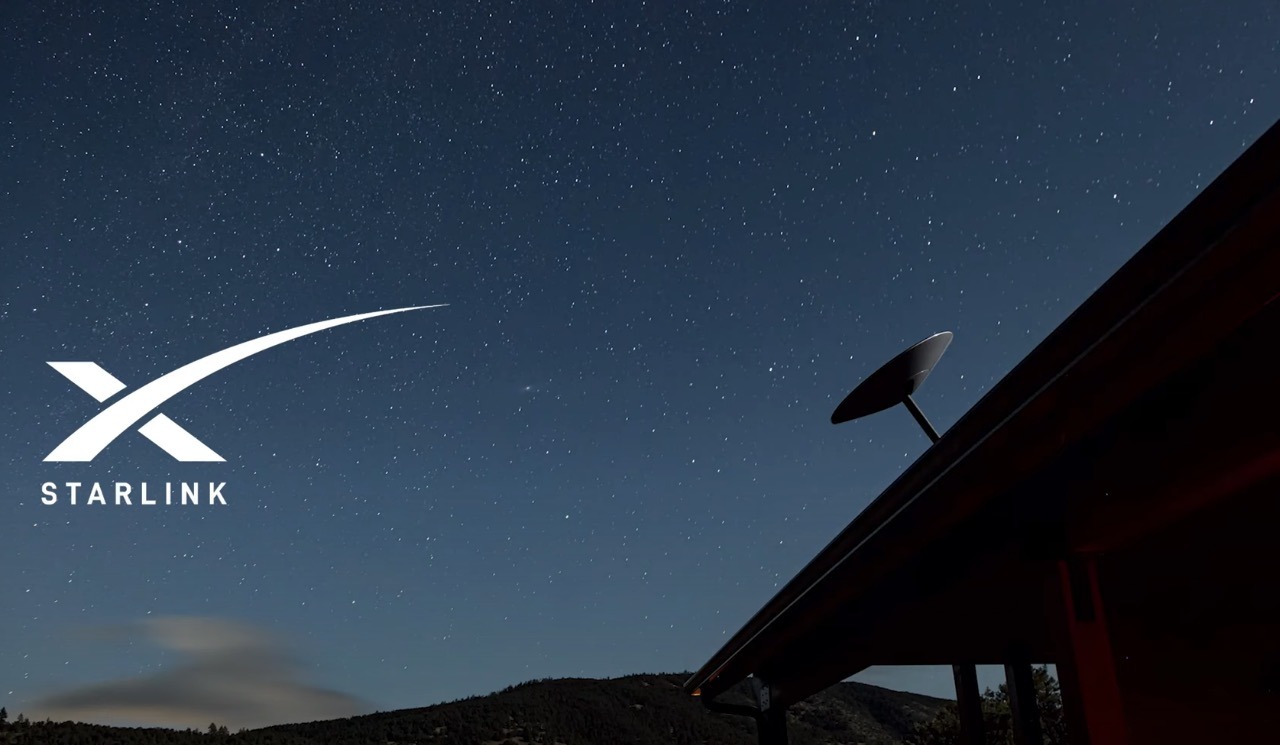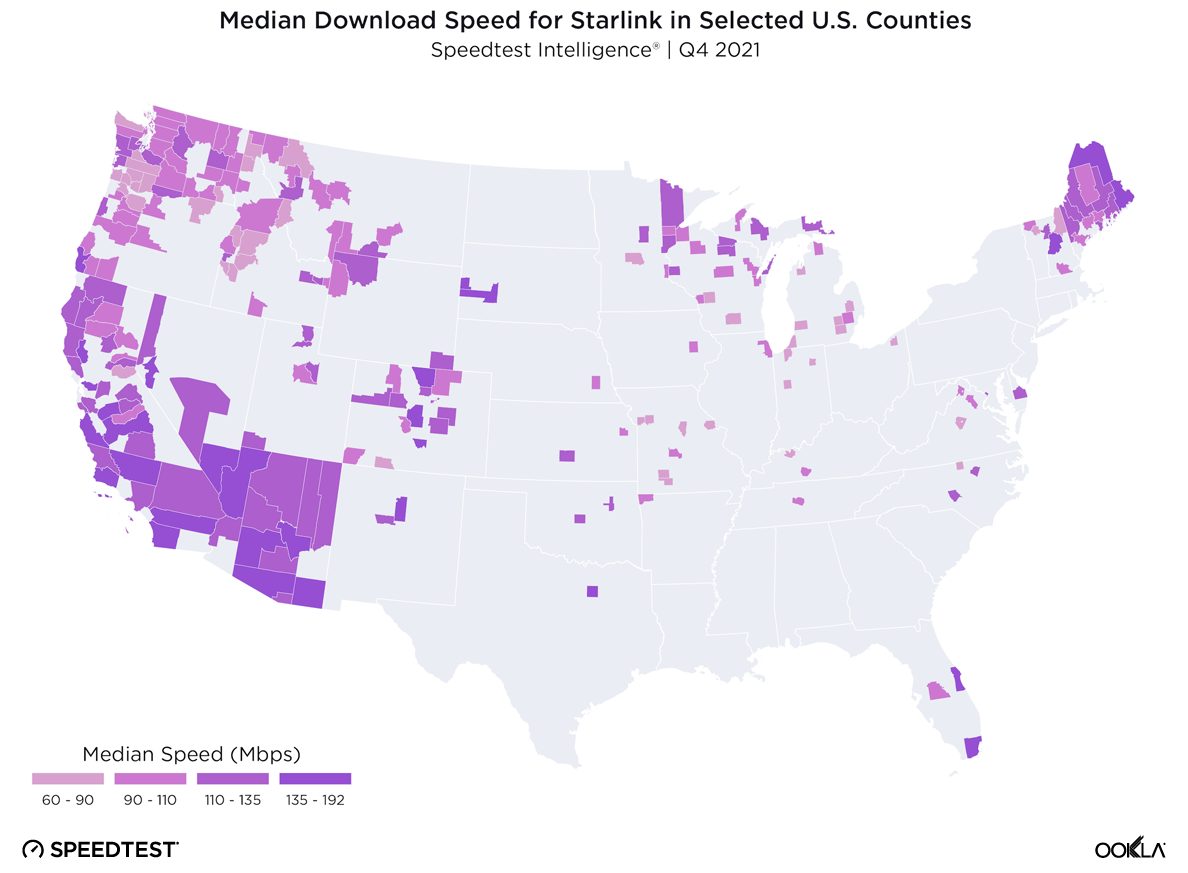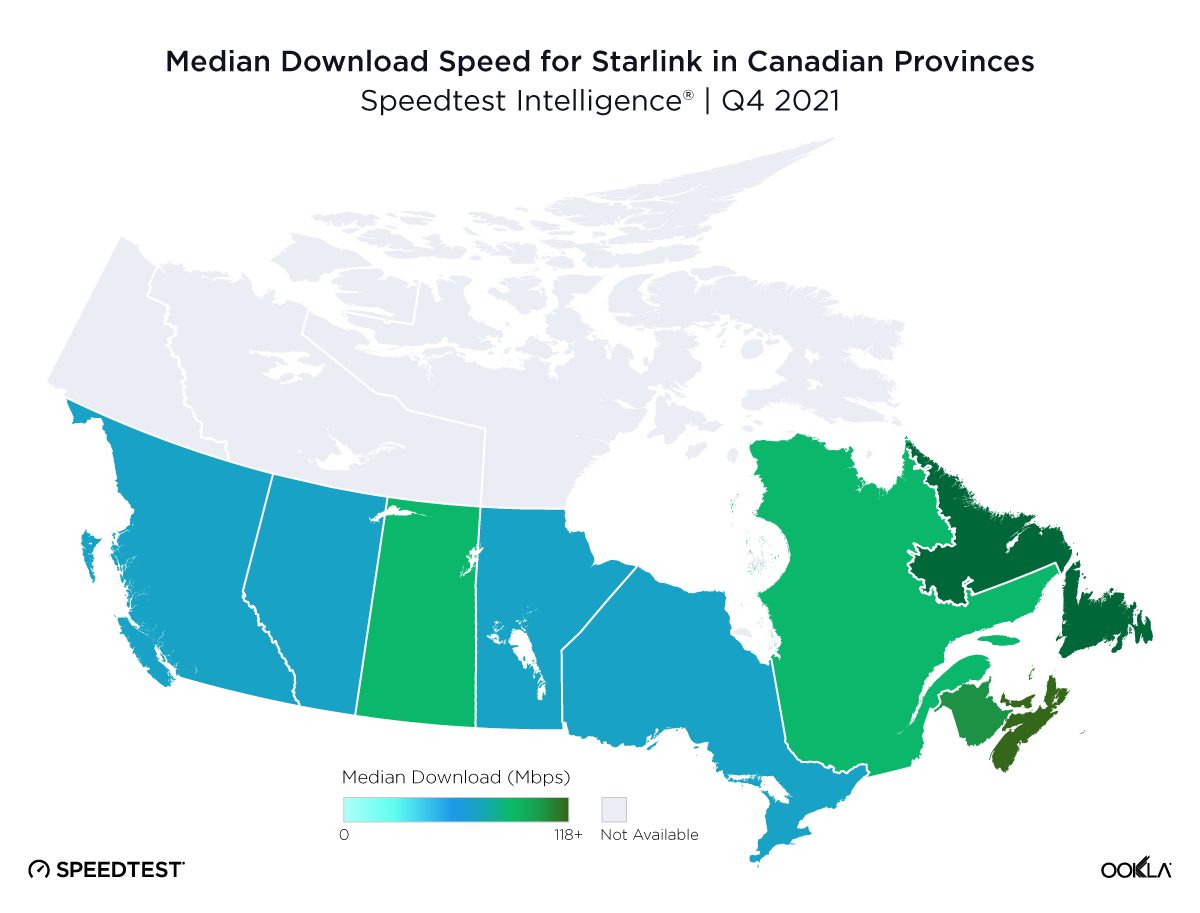
SpaceX Starlink Median Download Speeds Surpass 100 Mbps in the U.S., Canada: Report

A new report from Ookla Speedtest examining Q4 2021 internet download/upload speed data from users across the world found that SpaceX’s Starlink saw a marked increase in median download speeds, delivering 100+ Mbps in the U.S., Canada, and 13 other countries.
Starlink is a high-speed broadband service from SpaceX that connects to a constellation of satellites in low Earth orbit (LEO) and is designed to provide affordable internet at viable speeds anywhere and everywhere across the globe.
While Ookla saw the service’s median download speeds dip a little during Q3 2021 as more users were added to the network, Starlink turned things around in the fourth quarter with an increase in median download speeds across the globe.
In Q4 2021, Starlink handily exceeded the median download speeds offered by fixed broadband providers in Canada and fell just shy of the same in the U.S.

Image: Ookla
In the U.S., Ookla found a median download speed of 104.97 Mbps (up from 87.25 Mbps in Q3 2021) across the U.S. on Starlink’s satellite internet network. The gap between Starlink’s median download speeds and those offered by terrestrial broadband connections has narrowed slightly, with the former now delivering 131.30 Mbps (119.84 Mbps in Q3 2021).
That said, Starlink still reigns supreme in the satellite internet space. The service’s U.S. competition, HughesNet and Viasat, both offer download speeds that are a fraction of Starlink’s and latency that is 15-20 times as high. Starlink has basically become the only viable option for rural and remote customers in the U.S. who don’t have access to fast fixed broadband.
The average latency for Starlink in the U.S. during the fourth quarter was 40 ms — definitely higher than fixed broadband’s 14 ms median, but lower than the previous quarter’s 44 ms.
Ookla‘s data also found that Starlink’s performance varies greatly from one county to the next.

Image: Ookla
Even so, the slowest median download speeds on Starlink (observed in Columbia County, Oregon, at 64.95 Mbps) far exceed the median download speeds offered by other satellite internet providers and are well above the FCC’s Baseline performance tier of at least 25 Mbps download speed.
Going north of the border into Canada, Ookla observed median download speeds of 106.64 Mbps across the country on Starlink, up almost 25% from 84.55 Mbps in the previous quarter and easily beating the average download speeds of 96.39 Mbps offered by fixed broadband providers.

Image: Ookla
What’s more, Starlink connections were also faster, on average, than land-based broadband connections on a provincial level in seven out of Canada’s ten provinces — Manitoba, Newfoundland and Labrador, Nova Scotia, Ontario, Prince Edward Island, Quebec, and Saskatchewan.

Image: Ookla
Starlink had much higher latency than fixed broadband, at a median of 55 ms compared to just 11 ms for broadband, but that is impressive nonetheless for an internet connection being beamed to your house from space.
Starlink also continues to be a godsend for those who live in rural/remote locations or don’t have (affordable) access to an uncapped internet connection.
As of February, Starlink has surpassed 250,000 user terminals across the globe.
SpaceX CEO Elon Musk enabled Starlink service in Ukraine shortly after Russia began invading the country late last month. SpaceX is sending regular shipments of Starlink user terminals to the country to help maintain communications and administrative infrastructure, with the latest batch arriving on Tuesday.

